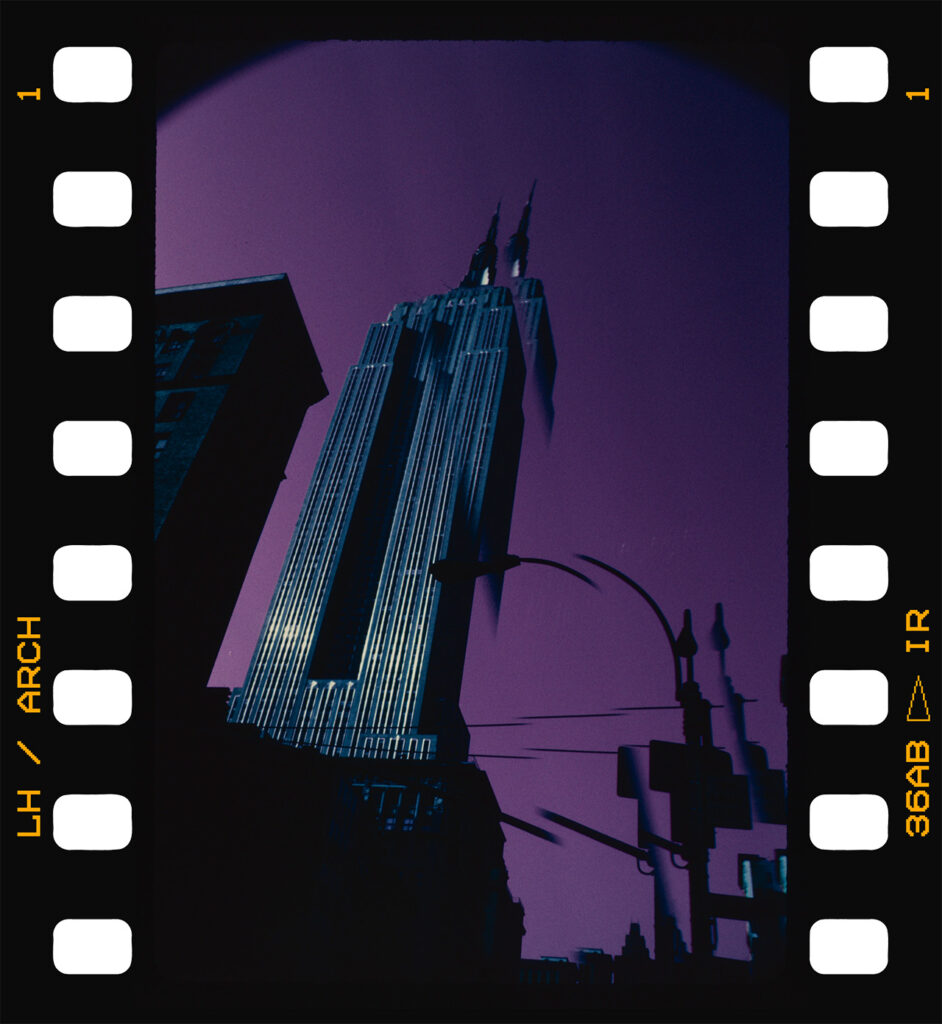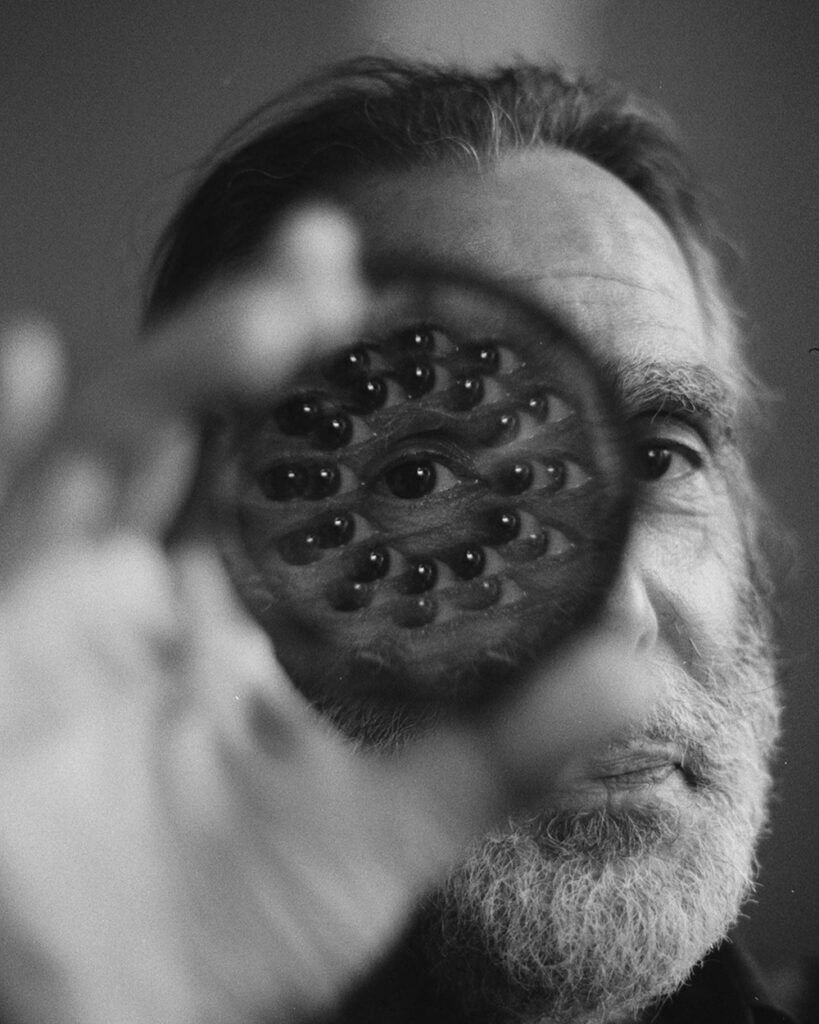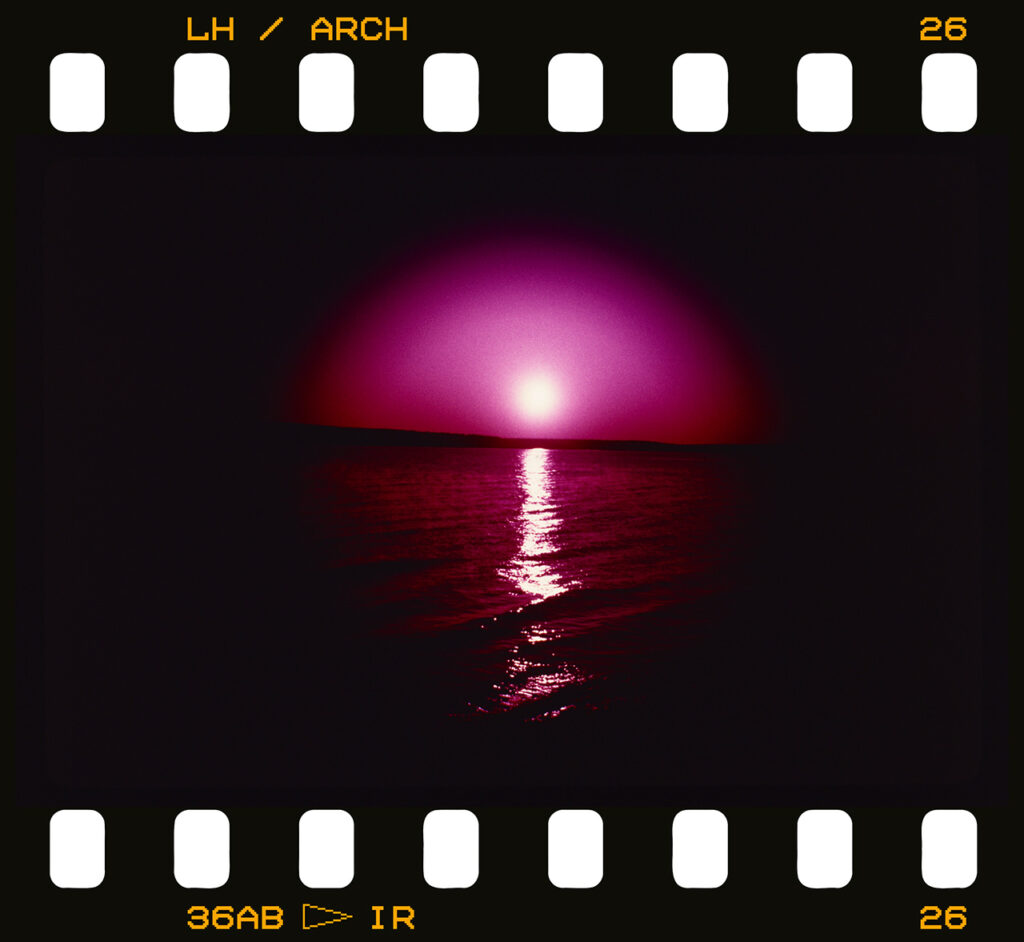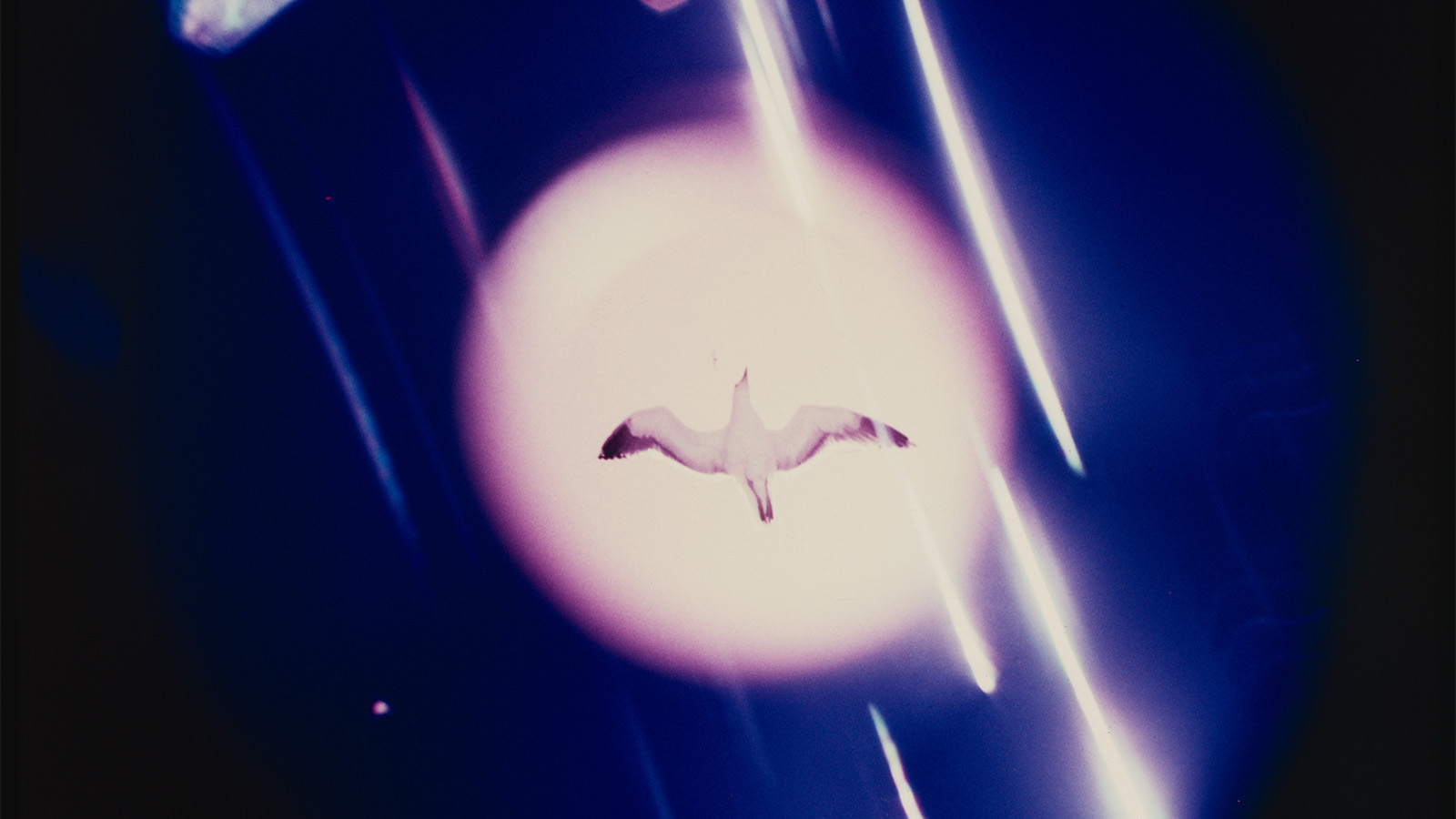The world, through Lawrence Horn’s lens, is newly unreal. New York City’s buildings materialize in spectral angles, skies and sunsets are awash in polychromatic hues, and portraits are shot through with a prismatic kineticism. They’re images that emerge from Horn’s experiments with photography between 1973 and 1986, when he roamed the East Village and parts beyond with an analog camera, loaded with color filters and infrared film, to capture light and life. And they’re images that the photographer would store away in a private archive, never to be seen for nearly four decades.

36AB1 NFT by Lawrence Horn. Image: OpenSea
Today, with the sway of the zeitgeist, Horn’s work has finally surfaced — not in a gallery or a monograph, but of course, on the blockchain. Last November, the first batch of his color and infrared film photography NFTs were released on the online platform, The Digital Archive (TDA), created by Neue Projects and Bustani Agency, before becoming available on the secondary market on OpenSea. The larger aim here is obviously to propel Horn’s photographs into the light of day, though the more immediate goal is to financially support an artist who was living in a precarious housing situation and surviving off Clif bars.
“He’s 78-years-old and we wanted to help him out by selling his archive,” says Margarita Kiryushkina, Co-Founder of Neue Projects. “We realized that if we’re going to go through the traditional art world, it is going to take a lot of time and investment. With NFTs, it makes sense because people are invested in the market; they’re more open-minded and would be ready to understand Lawrence’s work.”

His images, said Lawrence Horn, “encapsulate the present, past and future within them, as well as the spatial, deconstruction and psychedelic effects.” Image: Vince Jefferds / @the.digital.archive on Instagram
Sure enough, the first release of Horn’s 1/1 NFTs sold out in three hours, enabling him to secure a stable apartment by the end of the year. It’s an outcome that TDA recognizes as a collective humanitarian effort — one that has similarly been exercised by projects such as Pak and Julian Assange’s Censored and most recently, UkraineDAO. “I really want to highlight the word ‘community’ because that’s what it’s all about,” Jessica Tatievski, Neue Projects’ other Co-Founder, tells Jing Culture & Commerce. “They understood the story, they understood the urgency of this matter, and they’re connected on a humanitarian level.”
Undoubtedly, that connection is further energized by an evocative body of work and a spirit of experimentation that, as Kiryushkina points out, runs through Horn’s photography as much as it does the NFT art space. But, too, the analog format represents a refreshing foil to the digital form — “It’s almost like highlighting an obsolete medium in the digital space,” notes Tatievski. By bringing these images on-chain, TDA isn’t just reviving said medium, but preserving it or, as Tatievski puts it, “mimic[king] the analog archive as much as possible in the digital space.”

36AB26 NFT by Lawrence Horn. Image: OpenSea
Besides being high-definition 3,600-dpi scans, each Horn NFT replicates the film strips or perforations that usually accompany photography processing, and are marked with a rollcode (or catalog number) that is reflected in the metadata. So while the AA rollcode launched the archive, the most recent AC rollcode dropped on January 25. “Essentially, we’re archiving the work digitally on the blockchain,” Tatievski explains. “We put it in the right order and we also categorize it based on the metadata that we have online simultaneously.”
Notably, the smart contracts behind these NFTs, along with the TDA storefront, have been created and customized from scratch as opposed to being sourced from third parties — representing, the duo emphasize, their long-term commitment to growing the platform. “We want to do things right,” says Kiryushkina. “We’re focusing on building out the brand and giving the archive all the recognition it deserves.” That includes the ongoing endeavor of logging contextual information for each photograph with Horn’s input and laying out plans to license the archive to cultural institutions.

The NFTs are 3,600-dpi scans and bear rollcodes or catalog numbers reflected in the metadata, effectively “archiving the work digitally on the blockchain,” says Tatievski. Image: Vince Jefferds / @the.digital.archive on Instagram
The intent is to install into TDA’s foundations the kind of confidence that is increasingly rare in a NFT space littered with rug pulls and anonymous figures. That has meant establishing trust and agility internally and as the project engages with the wider community. As the platform plans for more special collections and drops, Tatievski highlights, “We want to be as open and transparent as possible.”
And it’s been done before: this cultivated trust, from the start, convinced a graying artist to consign his body of work to the blockchain. “He took it like a champion,” says Tatievski of their “psychedelic grandfather.” If not a reflection of TDA’s solid pitch, it’s testament to Horn’s continued dauntlessness when it comes to technology. To work with infrared cameras, after all, is to work with light-blind filters. Pointing one at the sky, Horn would only ever see pitch blackness through the viewfinder. Nonetheless, time again, he directed his lens upward and clicked the shutter.



